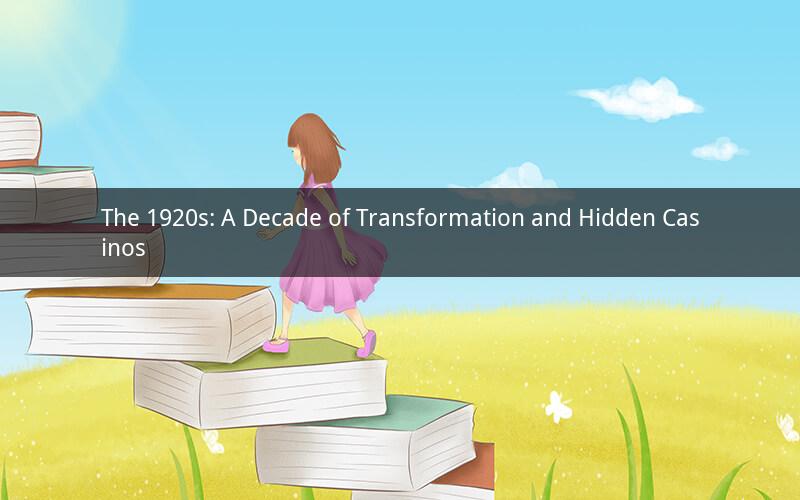
The Roaring Twenties was an era marked by profound transformation, not only in the United States but also globally. It was a time when the economy boomed, prohibition was enforced, and people sought entertainment to escape the stresses of everyday life. One might wonder: were there casinos in the 1920s? The answer is complex, as the landscape of gambling during this era was vastly different from today.
Gambling during the 1920s
During the 1920s, the United States was under the strictures of Prohibition, a constitutional amendment that prohibited the production, transportation, and sale of alcohol. This ban was intended to eliminate the crime and corruption that were believed to be associated with the alcohol industry. However, the ban also inadvertently led to a rise in illegal gambling.
Although legal casinos were not widespread during the 1920s, there were several clandestine gambling establishments that thrived during this time. These places, often referred to as "speakeasies," were secret bars that also offered gambling as a means of entertainment. These establishments were a popular destination for individuals looking to escape the harsh realities of Prohibition and enjoy the thrill of gambling.
Prohibition and the Rise of Illegal Casinos
The enforcement of Prohibition led to a surge in the demand for gambling. While legal casinos were scarce, underground gambling dens became a staple in many cities. These places were often run by criminal organizations and were a significant source of revenue for bootleggers, who used the profits to finance their illegal alcohol operations.
Speakeasies were not the only places where gambling took place. Horse racing, dog racing, and even baseball were popular forms of gambling during the 1920s. The illegal nature of many of these activities made it difficult to pinpoint the exact number of casinos that existed during the era. However, it is safe to say that there were numerous clandestine gambling establishments across the United States.
The Speakeasy Era
The speakeasy era was a time when people could enjoy the thrill of gambling in a clandestine setting. These establishments were often decorated with lavish interiors and offered a variety of games, including poker, blackjack, roulette, and dice. The allure of the speakeasy was further enhanced by the presence of "flappers," women who were known for their fashionable attire and unconventional behavior.
Despite the illegal nature of these places, they were a significant source of entertainment for many. The 1920s were a time of social upheaval, and people sought ways to express their newfound freedom. For many, this included visiting speakeasies and participating in illegal gambling activities.
Legalization and the End of the Speakeasy Era
The Prohibition era came to an end in 1933 when the 21st Amendment was ratified, repealing the 18th Amendment. The end of Prohibition led to the closure of many speakeasies and gambling dens, as the demand for illegal gambling diminished. However, the 1920s had left an indelible mark on the history of gambling in the United States.
Today, legal casinos are a significant part of the American landscape, with Las Vegas being the most famous example. The history of illegal gambling during the 1920s has contributed to the development of today's gambling industry.
1. What was the primary motivation behind the establishment of clandestine gambling dens during the 1920s?
Answer: The primary motivation behind the establishment of clandestine gambling dens during the 1920s was the demand for entertainment and the illegal nature of alcohol production, transportation, and sale under Prohibition.
2. How did the rise of speakeasies during the Prohibition era impact American society?
Answer: The rise of speakeasies during the Prohibition era provided a place for people to socialize and escape the stresses of everyday life. They also became a significant source of revenue for criminal organizations involved in bootlegging and illegal gambling.
3. What types of gambling were popular during the 1920s?
Answer: Horse racing, dog racing, baseball, poker, blackjack, roulette, and dice were popular forms of gambling during the 1920s.
4. How did the 1920s contribute to the development of today's gambling industry?
Answer: The 1920s contributed to the development of today's gambling industry by providing a historical context and setting the stage for the rise of legal casinos after the end of Prohibition.
5. What was the role of flappers in the speakeasy era?
Answer: Flappers played a significant role in the speakeasy era by embodying the spirit of the times. They were known for their fashionable attire and unconventional behavior, which added to the allure of these clandestine establishments.